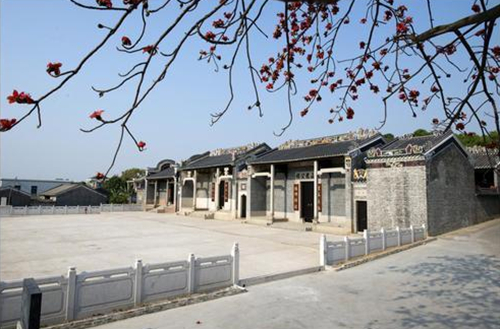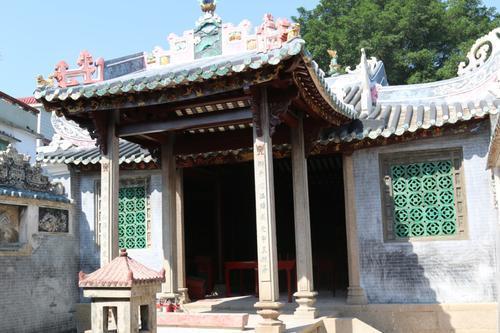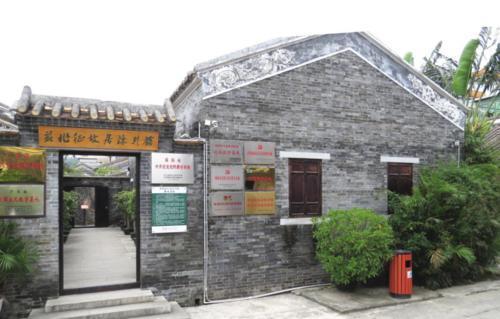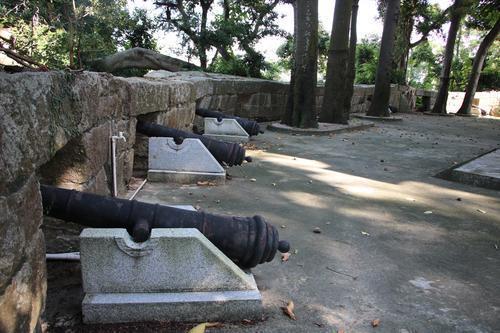Four Zhuhai relic sites put forth for greater protection

The Guangdong Bureau of Cultural Relics has named four sites in Zhuhai for listing as national key cultural relics protection units, the city's Radio, Television, Culture, Tourism & Sports Bureau announced on Feb 28.
They are Lvyi Ancestral Hall, Tangjia Three Temples, Former Residence of Su Zhaozheng, and Latashi Fortress. The four, already cultural relic protection units of Guangdong Province, have their own record files, with areas earmarked for protection and development control, and protection signs near the sites.
Lvyi Ancestral Hall
Lvyi Ancestral Hall is in Nanmen Village of Doumen District. It forms an architectural complex along with Zhao Yifeng and Zhao Kunshan shrines that represents architectural styles of the Ming Dynasty (1368-1644), Qing Dynasty (1644-1912), and Republic of China period (1912-1949) respectively.
With a combined floorage of 1,643.69 sq m (.4-acres), the three structures are separated by vertical alleys and connected by horizontal ones. They have three tiers, each with three rooms. The oyster shell walls and boat-shaped roof ridges fully embody the southern coastal style.

Lvyi Ancestral Hall
A monument to the offspring of the Chao (Zhao) royal family, the well-preserved architectural complex is significant for the study of the southward migration of northerners along with their culture during the Southern Song Dynasty (1127-1279).
Tangjia Three Temples
Tangjia Three Temples -- Kam Fa, Man Mo, and Templa -- sit on the northwest side of Datong Road in Tangjia Village, Tangjiawan Town, Zhuhai High-Tech Industrial Development Zone. The date of their construction is unknown, yet inscriptions record that they were heavily restored during the Qing Dynasty (1644-1911) in 1775, 1804, 1827, and 1863.

Tangjia Three Temples
The southeast-facing three temples are a fusion of column-and-tie and post-and-lintel structures. Covering 1,500 sq m (.37 acres), the gray-brick-roofed structures are 32.72 m (35.78 yds) wide and 29.6 m (32.37 yds) deep. Templa Temple, which features a gable-and-hip roof, is the highest-level such structure in Zhuhai.
Former Residence of Su Zhaozheng
Built in the late Qing Dynasty (1644-1912), the Former Residence of Su Zhaozheng is in Qi'ao Community, Tangjiawan Town, Zhuhai National Hi-Tech Industrial Development Zone. The 100-sq-m (.02-acre) structure has a two-in-one kitchen, rice-husk room and yard surrounded by a short wall made of oyster shell and ash, yellow mud, and glutinous rice paste.

Former Residence of Su Zhaozheng
Su Zhaozheng (1885-1929), one of the early leaders of the Chinese Communist Party and the founder the Executive Committee of the All-China Federation of Trade Union, spent his adolescence there. He was best known for prominent achievements in leading the Chinese Workers' Movement.
Latashi Fortress
Latashi Fortress is on Paotai Mt, Xiawan of Gongbei Subdistrict, Xiangzhou District. Covering 3,600 sq m (.89-acres), it comprises the Baojing Bay Rock Carvings, battlements, a watchtower, and the former venue of the Gongbei Customs Land Route Drug Squad Headquarters.
Macao Vice Magistrate Ji Tai inscribed “南天柱石” (Nan Tian Zhu Shi) on the rocks there in 1845 and Qianshan Vice Magistrate Cao Guozhen inscribed “凤山锁钥” (Feng Shan Suo Yao) in 1890 to stress its prime military location.

Latashi Fortress [Photos courtesy Zhuhai Daily]
The Portuguese Macau government occupied the fortress in 1849 until an army led by Macao Vice Magistrate Cai Guozhen reclaimed it in 1890. It served as the Gongbei Customs Land Route Drug Squad Headquarters before the Chinese People's Liberation Army took over the fortress in 1949. The site is now the encampment of the 5th Detachment of Guangdong Armed Frontier Police.
MOST POPULAR
Editors' Picks
 Infographic:
China's development in culture, tourism industries
Infographic:
China's development in culture, tourism industries
 Infographic:
China's major developments in 2024
Infographic:
China's major developments in 2024
 Infographic:
Highlights of China's 5th national economic census
Infographic:
Highlights of China's 5th national economic census




